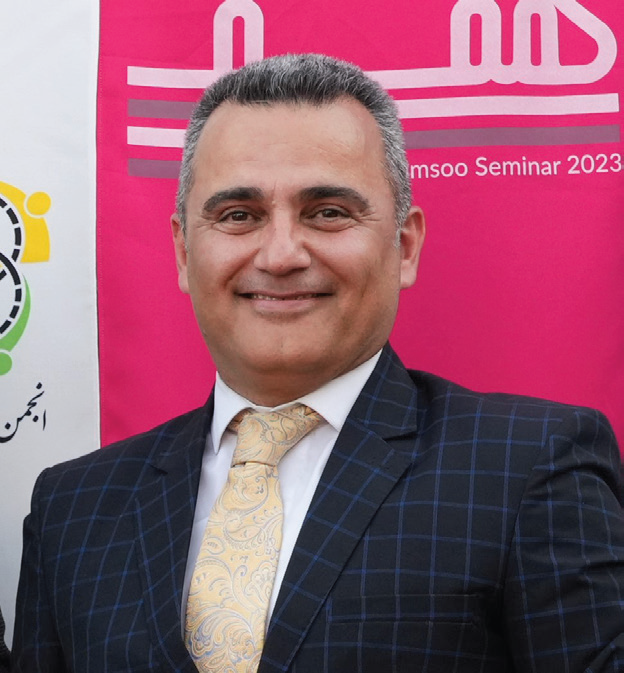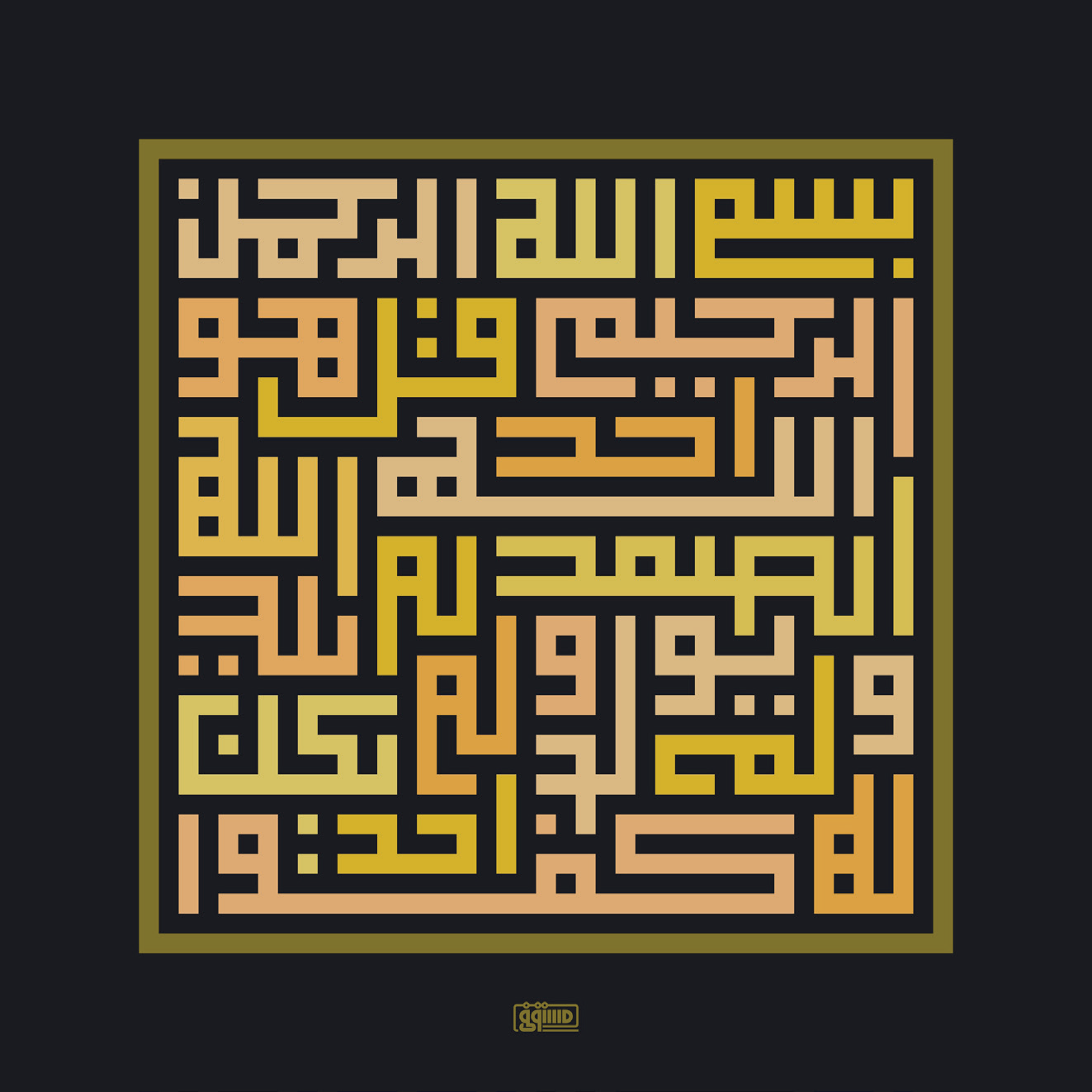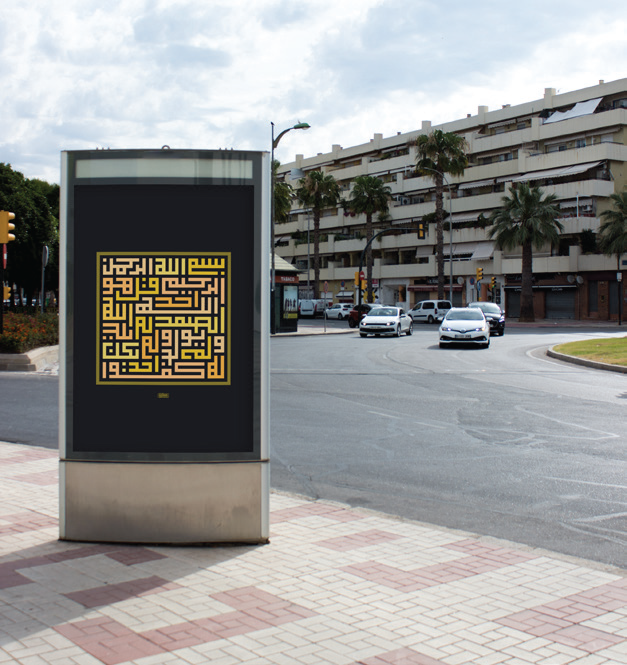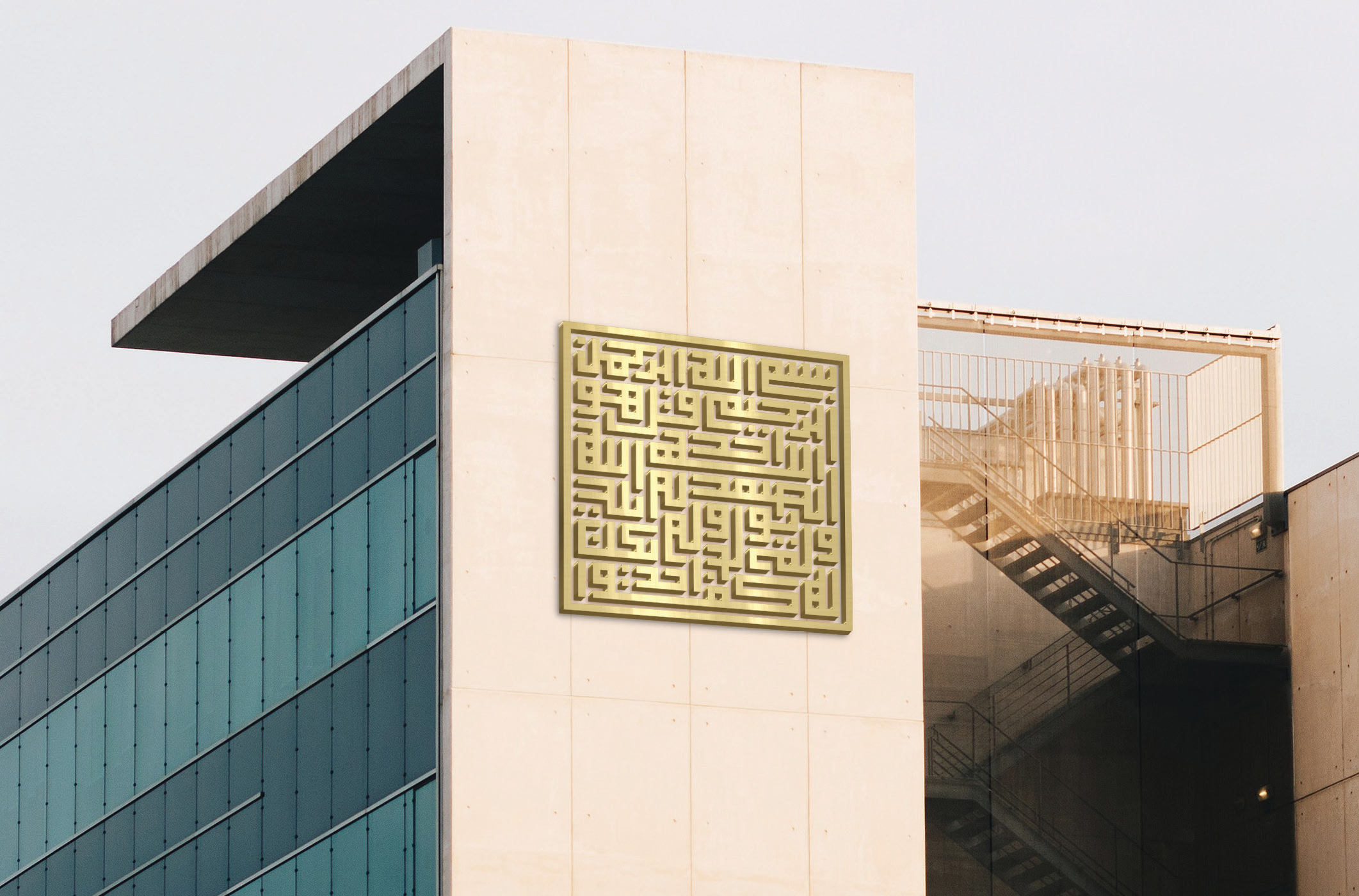
Mr. Kourosh Mostofi has been an active business face during the past few years; regarding his expertise in marketing, entrepreneurship consultant, establishment, development, standardization of sales and service franchising networks, and ideation in combining graphic arts with the construction industry
Bannai script is a style of Kufic calligraphy that emerges from drawing geometric shapes (squares, rhombuses, rectangles, as well as parallel and intersecting lines) based on a checkered pattern.
After the fifth century, Hijri*; Bannai lost its first use in writing the Holy Quran; it gradually went through its stages of growth during the Ilkhanate* and Timurid* periods, which are considered the flourishing periods of calligraphy, along with various lines such as Thulth, decorative Kufi , Naskh, etc. for sculptural decorations, plastering, tiling and brickwork for internal and external surfaces of mosques and religious buildings; porches on the back and sides of arches, the round body of minarets as well as mansions and markets; because it is easier to cut than other lines that are full of twists and turns and it is used in full harmony with the main elements of the building or the facade covering.
The other name of Khat Bannai is Maaqeli, which is pronounced in two ways: one is Moaqeel, derived from the thought and art the calligrapher puts into drawing the lines, and its reading also requires wisdom. The other is Maaqeel (rhymes with Mahfi l) which means a wall, a castle, a shelter, or a high mountain. Because its letters, like the inhabitants of a castle, encompass each other in such a way that it is difficult to reach them, create division, or change them. Bannai is also pronounced in two ways, both of which are correct.
One is Banai or Benai, which attributes this line to buildings, and the other, due to its decorative use in architecture, is Bannai because the designers of this line were most likely architects.
In 2018, a professor of calligraphy, in response to the defects that can be seen in most inscriptions of this type of calligraphy, stated:
“These defects are the nature of calligraphy due to limitations of space; the artist has to remove or add some letters with a circular movement to complete the work!”
The designs and executions that have been carried out with this font so far, are generally incomplete and don’t contain all aspects, so hearing this answer from a calligraphy master did not seem very logical. For that reason, by using the analytical and developmental descriptive methods, collecting data, and field observations; a new link between the design method and the modern execution method of Kufic inscriptions of Bannai or Benai (Maaqeli) was created in such a way, that the designing method is chosen from a difficult or overlapping type with no additions or deductions during design or execution. Complying with all of the following items will make these distinctive and different designs and executions more evident:

1. Uniformity in thickness of Sawad (black empty spaces) and Bayaz(colored spaces)
2. Quadrilateral designs (squares and rectangles)
3. Equal distances between vertical and horizontal lines
4. Lack of uncertainty in reading the words due to the placing of the letters
5. Embedding letters next to each other without any empty squares and extra spaces between the lines and words
6. Every word has its corresponding points
7. Not using extra points to fill empty spaces
8. Lack of repetition and rotation in letters and words
9. Legibility due to the completeness of the words
10. Not removing a point or letter due to insufficient spacing
11. Complying distances according to the rules of graphic art and design in a certain framework
12. The possibility of designing in various dimensions and formats
13. Filled in surfaces both vertical and horizontal
14. Lack of a forced rotation in words
This new design is very important since it preserves and promotes the existential philosophy of Bannai or Benai, using Iranian calligraphic art to fi x conventional defects. It has intertwined with architecture in a very creative and innovative way, with the hope that valuable and impressive progress could be achieved from the integration of graphic art in the architecture of the world, especially in Islamic countries, to achieve magnificent buildings with eternal and beautiful designs in internal and external architecture; such as the facade of residential, offices, commercial buildings, religious and cultural properties, services or medical buildings. It could also be used for walls and foundations of highway bridges; urban signs inside parks, squares, and subway stations; urban billboards; and etc. in any desired dimensions.
The possibility of implementing special designs to narrate a part of the history or culture of countries (on a very large dimension) is one of the other capabilities of this method. It is worth mentioning that all projects ready for implementation have licenses from the relevant organizations (Dar al-Qur’an al-Karim and Intellectual Property Office of the Ministry of Islamic Guidance, the Islamic Republic of Iran).
* Around 1000-1100 AD
* Mongol Empire that ruled over Southwest Asia during 1256–1335 AD
* Turco-Mongol Empire that dominated Greater Iran during 1370–1507 AD


Opening Hours:
24/7
Phone: +90 531 640 4133
Email: info@trendzmena.com
Address: TRADEX INTERNATIONAL CONSULTING DANIŞMANLIK
itH. iHr. ve TiC. LTD. ŞTi.
Tomtom Mah. istiklal Cad. Beyoğlu iş Merkezi No.187 iç Kapr No: 4 Beyoğlu/iSTANBUL Beyoğlu V.D. 8591125255